Canva AI Review 2025: The Ultimate Design Platform Revolution
The design landscape has undergone a dramatic transformation in 2025, with artificial intelligence becoming the cornerstone of creative workflows. Canva, once primarily known as a simple drag-and-drop design tool, has evolved into a comprehensive AI-powered creative platform that’s reshaping how individuals and businesses approach visual content creation. This comprehensive review explores every aspect of Canva’s AI capabilities, from its revolutionary new features to pricing considerations and real-world performance. This Canva AI Review 2025 dives into the platform’s core innovations.
The Evolution of Canva’s AI Ecosystem
Canva’s journey into artificial intelligence represents more than just feature additions—it’s a complete reimagining of the design process. The platform has introduced Visual Suite 2.0, which seamlessly integrates productivity with creativity in ways that were previously impossible. This evolution positions Canva not just as a design tool but as an intelligent creative partner that understands context, anticipates needs, and delivers results that consistently exceed expectations.
The integration of AI throughout Canva’s ecosystem has transformed fundamental aspects of the design process. Where users once spent hours crafting individual elements, AI now enables rapid iteration and refinement. The platform’s machine learning algorithms analyze millions of design patterns, color combinations, and layout structures to provide suggestions that feel both professional and personalized.
Magic Design: The Heart of Canva’s AI Innovation
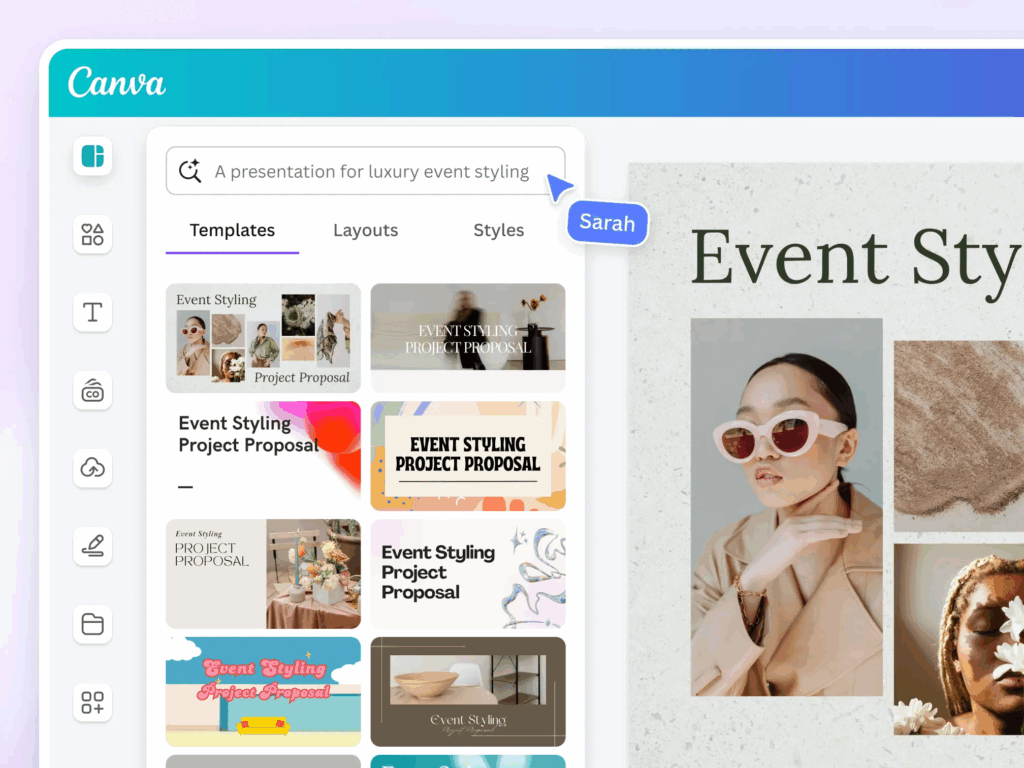
As you’ll see in this Canva AI Review 2025, Magic Design is at the heart of the platform’s evolution. Magic Design represents the pinnacle of Canva’s AI achievement, offering users the ability to generate complete design solutions from simple text prompts. This feature has been significantly enhanced throughout 2025, incorporating advanced natural language processing that understands nuanced creative requests. Users can now describe their vision in conversational language, and Magic Design translates these descriptions into polished, publication-ready designs.
The template generation capabilities have expanded dramatically, with the system now creating contextually appropriate designs for virtually any use case. Whether you need a presentation for a board meeting, social media graphics for a product launch, or marketing materials for a local event, Magic Design understands the specific requirements and constraints of each format.
The free version of Magic Design provides access to basic template generation, making it accessible to users who want to explore AI-powered design without financial commitment. However, the premium features unlock significantly more sophisticated capabilities, including brand-consistent designs, advanced customization options, and integration with professional workflows.
Canva AI Assistant: Your Personal Design Consultant
The introduction of Canva’s conversational AI assistant has fundamentally changed how users interact with the platform. This intelligent system goes beyond simple command execution, offering creative guidance, technical support, and strategic advice throughout the design process. The AI assistant understands project context, remembers previous conversations, and provides increasingly personalized recommendations as it learns user preferences. A highlight of this Canva AI Review 2025 is the intelligent assistant that changes how users interact with tools.
This AI-powered assistant excels at troubleshooting design challenges, suggesting improvements, and helping users achieve their creative vision more efficiently. It can analyze existing designs, identify potential improvements, and explain the reasoning behind its recommendations in clear, actionable terms. The assistant also serves as a valuable learning tool, teaching design principles and best practices through interactive guidance.
Revolutionary AI Features Transforming Creative Workflows
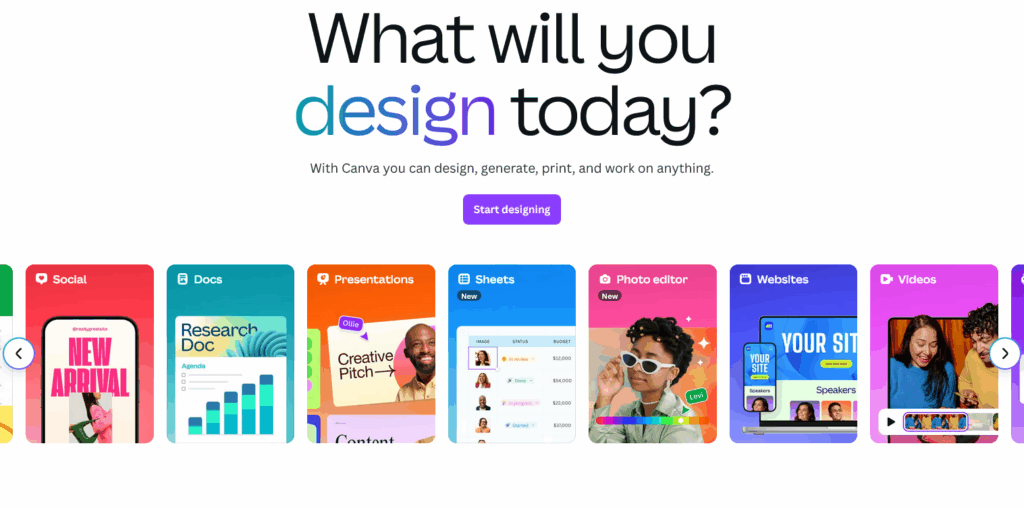
Magic Write: Content Creation Reimagined
Magic Write has evolved into a sophisticated content generation engine that produces compelling copy tailored to specific audiences and contexts. The system now understands brand voice, industry terminology, and cultural nuances, creating content that feels authentically human while maintaining consistency across all touchpoints.
The AI analyzes successful content patterns within specific industries, incorporating proven engagement strategies into every piece of generated content. This means users receive not just grammatically correct copy, but strategically crafted messages designed to drive specific outcomes.
Magic Edit: Precision Photo Enhancement
Photo editing has been revolutionized through Magic Edit, which combines advanced computer vision with intuitive user interfaces. The system can identify objects, people, and backgrounds with remarkable accuracy, enabling precise modifications that would traditionally require professional photo editing software.
The AI understands artistic intent, making intelligent decisions about lighting, shadows, and color correction that maintain visual coherence while implementing user-requested changes. This technology has democratized professional-quality photo editing, making it accessible to users regardless of their technical expertise.
Background Remover: Seamless Object Isolation
The enhanced background removal technology utilizes cutting-edge machine learning algorithms to distinguish between foreground subjects and backgrounds with unprecedented precision. The system handles complex scenarios like hair detail, transparent objects, and intricate edges that have historically challenged automated tools.
This feature has become particularly valuable for e-commerce applications, where product photography requires consistent, professional presentation. The AI can batch process multiple images while maintaining quality standards that meet commercial requirements.
Canva Sheets: AI-Powered Data Visualization
The introduction of Canva Sheets represents a significant expansion of the platform’s capabilities, incorporating AI-driven data analysis and visualization tools. With AI-powered features like Magic Insights and Magic Formulas, what once was time-consuming and complex is now effortless, intuitive, and even enjoyable. Our Canva AI Review 2025 wouldn’t be complete without exploring Magic Write and Magic Edit.
Magic Insights automatically identifies patterns, trends, and anomalies within datasets, generating natural language explanations that make complex data accessible to non-technical users. This feature has proven particularly valuable for business users who need to extract meaningful insights from their data without requiring specialized analytics training.
Magic Formulas simplifies complex calculations by accepting natural language inputs and translating them into appropriate formulas. Users can describe their calculation requirements in plain English, and the AI generates the correct formula structure, complete with error checking and optimization suggestions.
Presentation Creation: AI-Powered Storytelling
The presentation creation capabilities have been dramatically enhanced through AI integration, offering users the ability to generate compelling slideshows from simple prompts. The system understands narrative structure, visual hierarchy, and audience engagement principles, creating presentations that tell cohesive stories while maintaining professional aesthetics.
The AI analyzes successful presentation patterns across different industries and contexts, incorporating proven design principles and content structures. This ensures that generated presentations not only look professional but also effectively communicate their intended messages.
Resume Building: Professional Documents Made Simple
The AI-powered resume builder has become increasingly sophisticated, understanding industry-specific requirements and tailoring content to match job descriptions and career objectives. The system analyzes successful resume patterns within specific fields, incorporating relevant keywords and formatting conventions that improve applicant tracking system compatibility.
Another surprise in this Canva AI Review 2025 is the resume builder’s depth of customization using AI. The AI can suggest content improvements, identify gaps in experience presentation, and recommend formatting changes that enhance readability and impact. This feature has proven particularly valuable for job seekers who want to ensure their resumes meet current industry standards.
Code Generation: Bridging Design and Development
One of the most innovative additions to Canva’s AI arsenal is the code generation capability, which transforms visual designs into functional code. This feature serves as a bridge between design and development, enabling users to create interactive elements, websites, and applications without traditional programming knowledge.
The AI understands modern web development standards, generating clean, maintainable code that follows industry best practices. This capability has opened up new possibilities for designers who want to create more than static visuals, enabling them to build interactive experiences and functional prototypes.
Platform Accessibility and User Experience
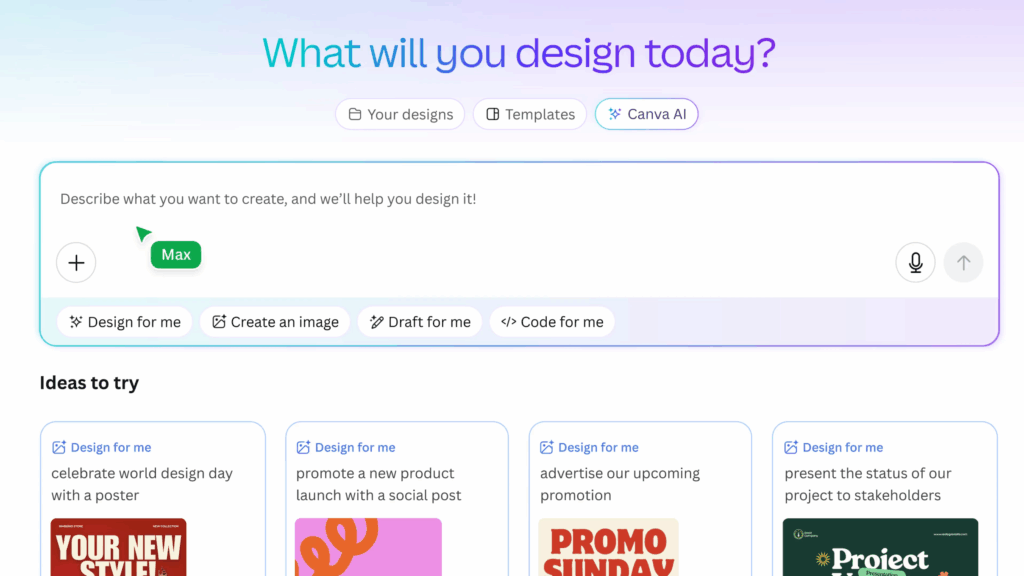
Canva Login: Streamlined Access Management
The login process has been enhanced with AI-powered security features that provide both convenience and protection. The system now includes intelligent authentication that recognizes user patterns and devices, reducing friction while maintaining security standards.
The platform supports multiple authentication methods, including social media integration, enterprise single sign-on, and biometric authentication options. This flexibility ensures that users can access their creative tools through their preferred method while maintaining security protocols appropriate for their organizational requirements.
Template Library: Expanding Creative Possibilities
The template library has grown exponentially, with AI-generated designs supplementing human-created content. The system now offers templates for virtually every conceivable use case, from traditional business documents to cutting-edge social media formats.
The AI analyzes user behavior and preferences to surface relevant templates, reducing the time required to find appropriate starting points for new projects. This personalization extends to color schemes, typography choices, and layout preferences, creating a truly customized creative experience.
Pricing Structure: Understanding Investment and Value
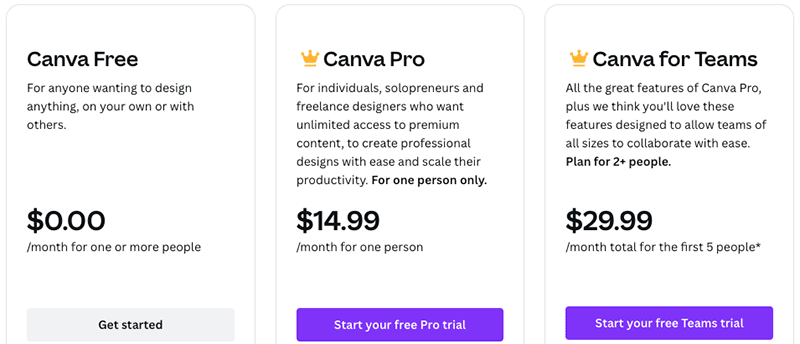
Free Version Capabilities
The free version of Canva continues to offer substantial value, providing access to basic AI features that enable users to create professional-quality designs without financial commitment. This tier includes fundamental Magic Design capabilities, basic photo editing tools, and access to a substantial template library. Pricing is a big factor, and in this Canva AI Review 2025, we examine how free and paid plans stack up..
The free version serves as an excellent entry point for individual users, students, and small organizations who want to explore AI-powered design without upfront costs. While some advanced features require premium subscriptions, the free tier provides sufficient functionality for many common design needs.
Canva Pro: Premium AI Features
Canva Pro costs $12.99/month for individuals and unlocks advanced AI capabilities that significantly enhance creative workflows. This tier includes unlimited access to Magic Design, advanced photo editing tools, brand kit functionality, and premium template libraries.
The Pro subscription provides access to sophisticated AI features like Magic Edit, advanced background removal, and intelligent resizing capabilities. These tools enable users to create professional-quality content that would traditionally require expensive software and specialized training.
Canva Plus AI: Enterprise-Grade Solutions
For organizations requiring advanced AI capabilities, Canva Plus AI offers enterprise-grade features with enhanced collaboration tools, advanced security features, and priority support. This tier is designed for teams and organizations that need to maintain brand consistency while enabling creative flexibility across multiple users.
The enterprise features include advanced analytics, usage reporting, and integration capabilities that support complex organizational workflows. These tools are particularly valuable for marketing teams, educational institutions, and large organizations with substantial design requirements.
Performance Analysis: Real-World Testing Results
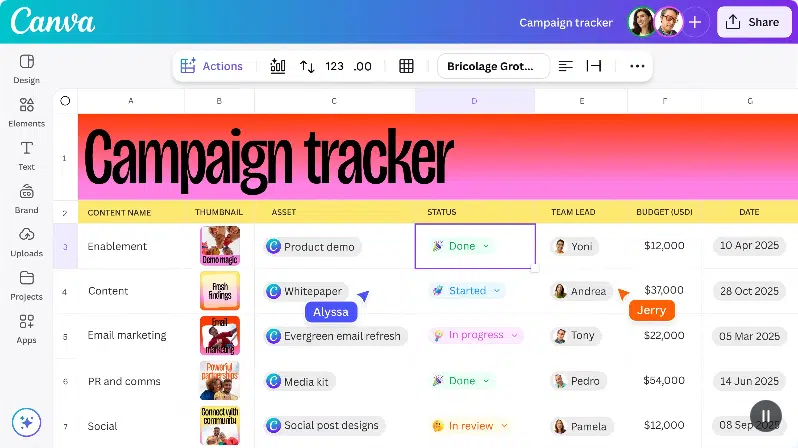
Speed and Efficiency Improvements
Real-world testing reveals significant performance improvements across all AI features throughout 2025. Magic Design now generates initial templates in under 30 seconds, while complex photo editing operations complete in minutes rather than hours. These speed improvements have dramatically reduced project timelines, enabling users to iterate more frequently and explore more creative options.
The efficiency gains extend beyond individual features, with the overall platform responsiveness improving significantly. Users report smoother workflows, reduced loading times, and more stable performance even when working with complex, multi-layered designs.
Quality Assessment of AI-Generated Content
The quality of AI-generated content has reached professional standards across most use cases. Template designs demonstrate sophisticated understanding of design principles, while generated copy maintains consistency with brand voice and messaging requirements. Photo editing results rival those produced by professional software, with particular strength in automated adjustments and intelligent object recognition.
Based on testing and user feedback analyzed in this Canva AI Review 2025 User feedback consistently highlights the contextual appropriateness of AI suggestions, with the system demonstrating understanding of industry-specific requirements and cultural considerations. This contextual awareness has proven particularly valuable for businesses operating in specialized markets or serving diverse audiences.
Integration Capabilities and Workflow Enhancement
Third-Party Integrations
Canva’s AI features now integrate seamlessly with popular business tools, including project management platforms, social media schedulers, and marketing automation systems. These integrations enable users to incorporate AI-powered design creation into existing workflows without disrupting established processes.
The API capabilities have been expanded to support custom integrations, allowing organizations to embed Canva’s AI features into their proprietary systems. This flexibility has proven particularly valuable for agencies and large organizations with complex workflow requirements.
Collaboration Features
The collaborative capabilities have been enhanced with AI-powered features that facilitate team coordination and project management. The system can automatically track changes, suggest improvements, and maintain version control across team members working on shared projects.
AI-powered commenting and feedback systems help team members communicate more effectively, with intelligent suggestions for addressing design critiques and implementing requested changes. These features have significantly improved team productivity and project outcomes.
Educational Applications and Learning Support
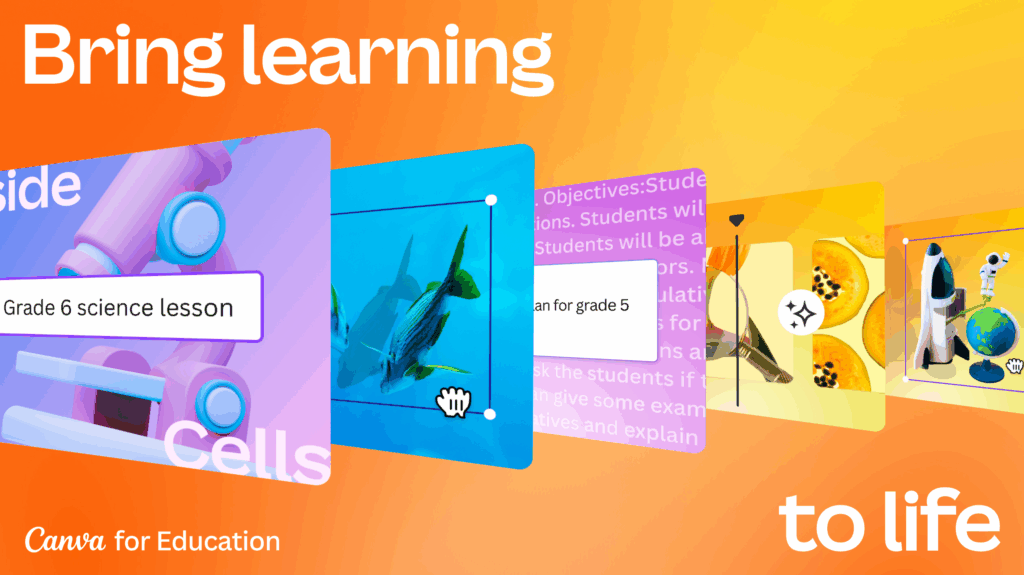
Teaching and Learning Enhancement
The AI features have proven particularly valuable in educational contexts, where they serve as teaching tools that help students understand design principles and creative processes. The system provides explanations for its suggestions, helping users learn while they create.
Educational institutions have reported improved student engagement and learning outcomes when incorporating Canva’s AI tools into their curricula. The ability to create professional-quality materials quickly enables students to focus on conceptual learning rather than technical execution.
Skill Development Opportunities
The platform serves as an excellent training ground for developing design skills, with AI-powered feedback and suggestions that help users improve their creative abilities. The system can identify areas for improvement and provide specific recommendations for skill development.
Users report significant improvement in their design capabilities after regular use of the AI features, with the platform serving as both a productivity tool and a learning resource. This dual function has made Canva particularly valuable for professionals looking to expand their creative capabilities.
Security and Privacy Considerations
Data Protection Measures
Canva has implemented comprehensive security measures to protect user data and creative assets. The AI systems operate within strict privacy frameworks that prevent unauthorized access to user content while enabling intelligent features and suggestions.
The platform provides transparent reporting on data usage and AI training processes, ensuring users understand how their information is being utilized. This transparency has been crucial for building trust among enterprise users who require strict data protection compliance.
Content Ownership and Rights
Users retain full ownership of their created content, with clear licensing terms that protect intellectual property rights. The AI-generated elements are provided royalty-free, ensuring users can utilize their designs commercially without additional licensing concerns.
The platform provides clear guidelines on content usage rights, helping users understand the legal implications of their creative work. This clarity has been particularly important for commercial users who need to ensure compliance with intellectual property regulations.
Competitive Analysis: Canva AI vs Alternatives
Leonardo AI Comparison
When compared to specialized AI image generation tools like Leonardo AI, Canva offers broader functionality but with different strengths. While Leonardo AI excels at creating highly detailed, artistic images from text prompts, Canva’s AI integration provides more comprehensive design solutions that include layout, typography, and brand consistency.
Canva’s advantage lies in its complete design ecosystem, where AI features work together to create cohesive, professional designs. Leonardo AI serves specific creative needs excellently but lacks the integrated approach that makes Canva valuable for business applications.
Traditional Design Software Alternatives
Compared to traditional design software, Canva’s AI features provide significant advantages in speed and accessibility. While professional tools like Adobe Creative Suite offer more granular control, Canva’s AI capabilities enable users to achieve professional results without extensive training or technical expertise.
The cost-effectiveness of Canva’s AI features compared to traditional software licensing makes it particularly attractive for small businesses and individual users. The subscription model provides access to continuously improving AI capabilities without the large upfront investments required for professional software.
Future Developments and Roadmap

Emerging AI Capabilities
Canva continues to invest heavily in AI research and development, with several innovative features expected to launch throughout 2025. These include advanced video editing capabilities, three-dimensional design tools, and enhanced personalization features that adapt to individual user preferences.
The company’s commitment to AI innovation suggests that current capabilities represent just the beginning of what’s possible. Future developments are likely to include more sophisticated natural language processing, improved creative suggestion algorithms, and expanded integration with emerging technologies.
Industry Impact and Trends
Canva’s AI developments are influencing broader industry trends, with competitors rushing to develop similar capabilities. This competitive pressure is driving rapid innovation across the design tool industry, ultimately benefiting users through improved features and capabilities.
The democratization of professional design capabilities through AI is reshaping creative industries, enabling smaller organizations to compete with larger enterprises in terms of visual communication quality. This trend is likely to continue, with AI becoming increasingly central to creative workflows.
Best Practices for Maximizing AI Benefits
Optimization Strategies
To maximize the benefits of Canva’s AI features, users should focus on providing clear, detailed prompts that communicate their creative vision effectively. The AI systems respond best to specific requests that include context, intended audience, and desired outcomes.
Regular experimentation with different AI features helps users discover the most effective workflows for their specific needs. The platform’s AI capabilities are constantly evolving, making ongoing exploration valuable for maintaining optimal productivity.
Creative Workflow Integration
Successful integration of AI features into creative workflows requires thoughtful planning and gradual implementation. Users should start with simple applications and gradually incorporate more sophisticated features as they become comfortable with the technology.
The most effective approach involves using AI as a starting point for creative exploration rather than a complete solution. This approach maintains creative control while leveraging AI capabilities for enhanced productivity and inspiration.
User Testimonials and Case Studies
Small Business Success Stories
Small businesses have reported significant improvements in their marketing effectiveness after adopting Canva’s AI features. The ability to create professional-quality content quickly has enabled these organizations to compete more effectively with larger competitors.
Case studies demonstrate measurable improvements in engagement rates, conversion metrics, and brand recognition following implementation of AI-powered design workflows. These success stories highlight the practical value of AI integration for businesses of all sizes.
Educational Institution Implementations
Educational institutions have successfully integrated Canva’s AI tools into their curricula, reporting improved student engagement and learning outcomes. The ability to create professional-quality materials quickly has enabled more interactive and visually engaging educational experiences.
Teachers report that AI features help them create more effective instructional materials while freeing time for focusing on student interaction and curriculum development. This efficiency improvement has proven particularly valuable in resource-constrained educational environments.
Technical Requirements and Compatibility
System Requirements
Canva’s AI features operate entirely through web browsers, eliminating the need for specific hardware requirements or software installations. This accessibility ensures that users can access AI capabilities from virtually any device with internet connectivity.
The platform’s cloud-based architecture provides consistent performance across different devices and operating systems. This universal compatibility has been crucial for teams working across diverse technology environments.
Performance Optimization
For optimal performance, users should ensure stable internet connectivity and updated browser versions. The AI features perform best with modern browsers that support the latest web standards and security protocols.
The platform includes performance monitoring tools that help users identify potential issues and optimize their experience. These tools provide valuable insights into usage patterns and system performance that can inform optimization strategies.
Conclusion: The Future of AI-Powered Design
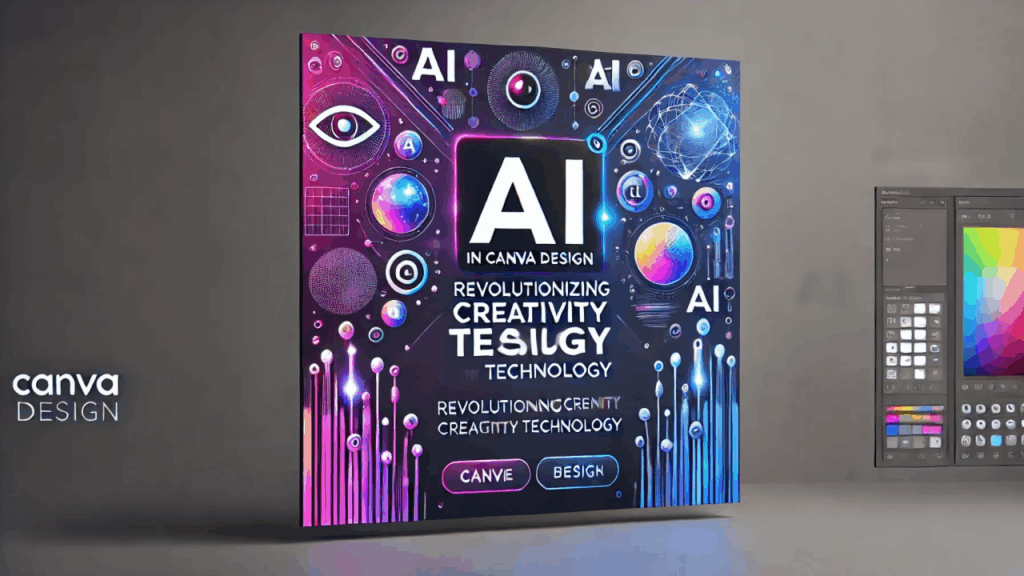
Canva’s AI capabilities in 2025 represent a significant leap forward in design technology, offering users unprecedented creative power combined with professional-quality results. The platform has successfully democratized advanced design capabilities, making professional-quality visual communication accessible to users regardless of their technical expertise or creative background.
The comprehensive integration of AI throughout the platform creates a cohesive creative environment where individual features work together to enhance overall productivity and creative outcomes. This holistic approach distinguishes Canva from competitors who offer isolated AI features without comprehensive integration.
The value proposition extends beyond individual features to encompass the entire creative workflow, from initial concept development through final implementation. This comprehensive approach has made Canva an essential tool for businesses, educators, and individual creators who need to produce high-quality visual content efficiently.
The continuous evolution of AI capabilities ensures that Canva remains at the forefront of design technology, with regular updates and new features that expand creative possibilities. This commitment to innovation positions the platform well for future developments in AI and design technology.
For organizations and individuals seeking to enhance their creative capabilities while maintaining efficiency and professional quality, Canva’s AI features offer compelling advantages that justify the investment. The platform’s combination of accessibility, capability, and continuous improvement makes it an excellent choice for anyone serious about visual communication in the modern digital landscape.
The transformation of design workflows through AI represents more than technological advancement—it represents a fundamental shift in how creative work is approached and executed. Canva’s comprehensive AI integration positions users to take full advantage of this transformation, enabling them to create more impactful visual content with greater efficiency than ever before possible. Ultimately, this Canva AI Review 2025 proves the platform is far more than just a design tool—it’s a full AI-powered ecosystem.
